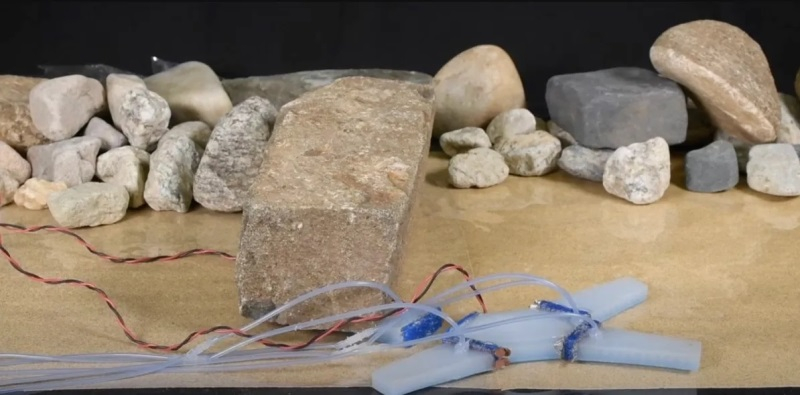Roboticists at Yale University have developed technology that will allow soft robots to shed or grow limbs if necessary. They demonstrated the results of their work in short videos.

Image source: The Faboratory at Yale University / YouTube
In one of the published videos, you can see how a soft four-legged robot moves along a horizontal surface and at some point a stone falls on one of its limbs. The reversible joints that are used to attach the limbs were heated under the influence of current, thanks to which the robot was able to simply throw away the limb, like a lizard throws away its tail, and continue moving. Although not shown in the video, the limb can be reattached in a similar manner.
In the second video, the soft robot cannot move from one table to another because there is a small gap between them. Two more robots of the same type come to his aid, joining the first one, making the entire structure much longer. After this, the three combined robots easily moved from one table to another.
Such capabilities are not something innovative in the world of robotics, especially modular ones. However, existing systems typically use mechanical connections and magnets, making them rigid. Innovative here are the robot joints, which are created using bicontinuous thermoplastic foam as well as a sticky polymer. This approach, due to the impact of current, allows you to melt and push apart the connections, and then restore them back by gluing them together. The researchers believe that the technology they created could lead to the creation of “robots that can radically change shape by changing mass through autotomy and interfusion.”